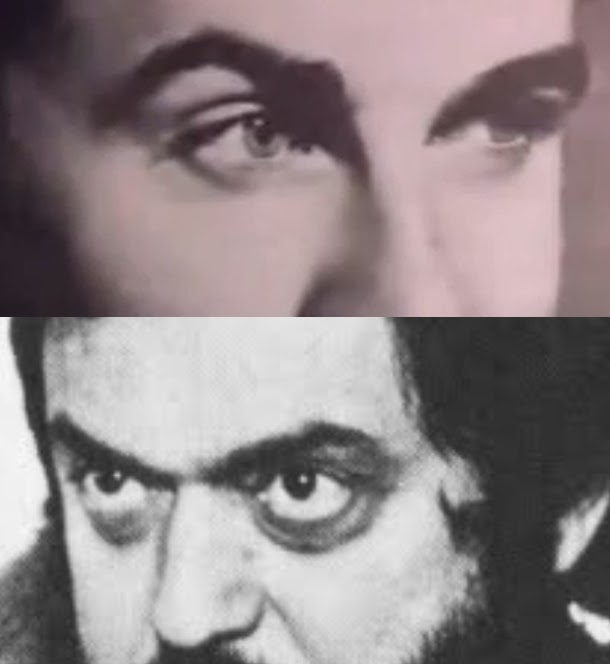 |
| (from top to bottom) Ed Wood; Stanley Kubrick |
Gaze, please, at the eyes of two of the most idiosyncratic, controversial and puzzled-about directors in film history, one considered to be among the best in his field, the other among the worst. Obviously, any director's greatest tools are his eyes. After all, every filmmaker is trying to get us to see the world through his eyes.
What do we see in Ed Wood's eyes? What do we see in Stanley's? What do these men's eyes tell us about their films? I think insufficient attention has been paid to directors' eyes. Maybe it could be a whole new branch of film study.
Ed Wood's eyes are those of a man who is handsome in an elegant, old-fashioned way. There is a delicacy to them and a hint of romance, perhaps a bit of femininity. See how the right eyebrow is cocked in a suave, seductive way. Eddie certainly had his share of women in his younger days, and several of them compared his appearance to that of Errol Flynn, a screen icon of the 1930s and '40s known for his swashbuckling roles and playboy lifestyle.
Now look at Stanley's eyes -- dark, intense, serious. These are the eyes of an obsessed man. The thick black eyebrows above jut sharply downward toward his nose, forming a shadowy brow which looms over the bulging orbs. Notice, too, the dark rings which circle them and give him a menacing appearance. Many of Kubrick's lead actors would have similarly intense, formidable gazes -- Jack Nicholson in The Shining, Malcolm McDowell and Patrick Magee in A Clockwork Orange, Vincent D'Onofrio in Full Metal Jacket, and Sterling Hayden in The Killing and Dr. Strangelove -- and Kubrick liked to film these men either from below or from angles in which they stared intently under furrowed brows. Perhaps all of these were self-portraits.

The Eyes have it!
ReplyDeleteYou have no idea how close I came to making that the title of this article. Scout's honor.
ReplyDeleteSo instead you went the Eyes of Laura Mars route. Understandable.
ReplyDeleteI don't think I ever realized that Ed Wood was a genuinely handsome young fella. And that Kubrick, well, I never thought of him as a more psychotic Pavoratti, but I guess I never looked close enough...
ReplyDelete